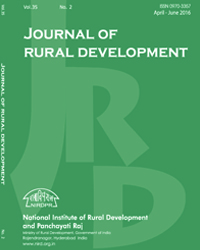Biodiversity Conservation and Local Livelihoods: A Study on Similipal Biosphere Reserve in India
Subscribe/Renew Journal
Over-exploitation of natural resources and changing climatic conditions due to global warming are responsible for rapid loss of biological diversity. Creation of protected areas (PAs) across the globe which forms a critical component in global biodiversity conservation efforts are primarily designed for preventing further loss of species by restricting human use of natural resources. The Similipal Biosphere Reserve (SBR) in the Indian State of Odisha is the sixth largest biosphere reserve in the country and forms a major part of the World Network of Biosphere Reserves. However, currently the reserve is under increasing pressure from growing human population that directly depends on the reserve for their livelihoods. The objectives of the present study are to develop a comprehensive understanding of the problems facing the SBR; and identify and analyse different factors that determine the extent of dependency of villages located in and around the reserve for extraction of non-timber forest products (NTFPs). The paper reviews the existing studies on the SBR by using the DPSIR framework for an in-depth understanding of interaction between local population and the biosphere reserve. Econometric techniques and descriptive statistics are applied to analyse the secondary data collected from 136 villages located in and around the reserve. The results show that economically poor villages and villages having more male members are likely to extract more NTFPs from the reserve. Villages located in transitional and buffer zones are likely to extract more NTFPs compared to villages that are in core zone. Designing appropriate and effective local institutions that would foster biodiversity conservation as well as livelihoods and structure the community behaviour are widely considered as the panacea for this problem.
User
Subscription
Login to verify subscription
Font Size
Information

Abstract Views: 268

PDF Views: 167



